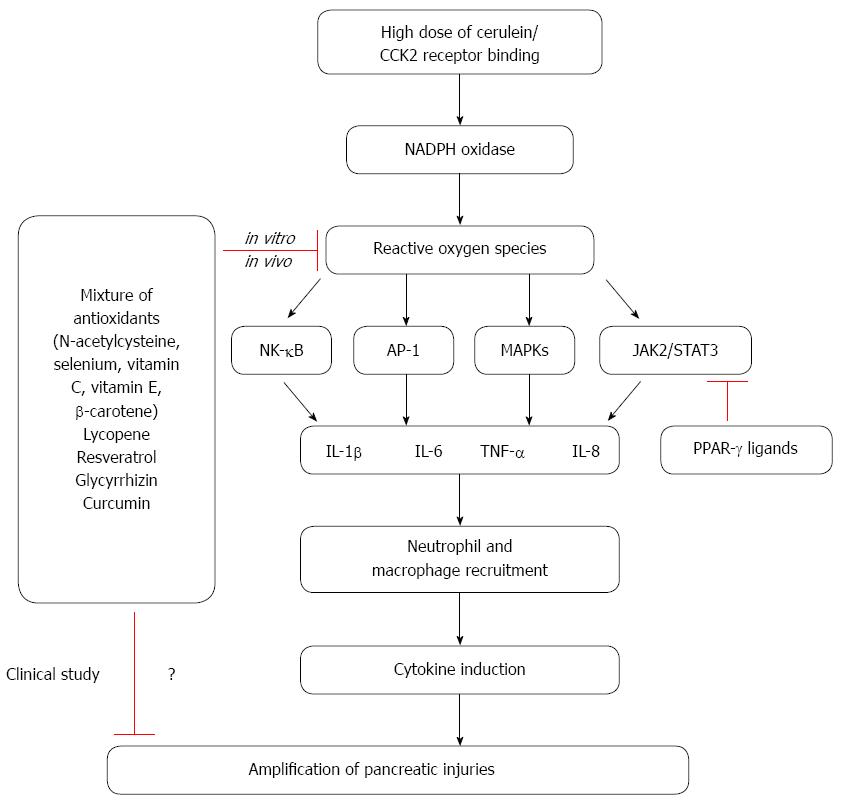Copyright
©2014 Baishideng Publishing Group Inc.
World J Gastroenterol. Dec 14, 2014; 20(46): 17324-17329
Published online Dec 14, 2014. doi: 10.3748/wjg.v20.i46.17324
Published online Dec 14, 2014. doi: 10.3748/wjg.v20.i46.17324
Figure 1 Scheme of oxidative stress-induced inflammation in cerulein pancreatitis.
High dose of cerulein, a cholecystokinin (CCK) analogue, binds to CCK2 receptor and stimulates the activation of NAPH oxidase to produce reactive oxygen species. Reactive oxygen species activate redox-sensitive transcription factors nuclear factor-κB (NF-κB) and activator protein-1 (AP-1) as well as inflammatory mediators mitogen-activated protein kinases (MAPKs) (mitogen-activated protein kinases) and janus kinase 2 (JAK2)/signal transducer and activator of transcription 3 (STAT3), which in turn induces the expression of cytokines IL-1β, IL-6, IL-8, and TNF-α in pancreas. Induction of cytokines recruits neutrophils and macrophages in the injured pancreatic tissues. Cytokines/chemokines act as a positive feedback loop to up-regulates their own expression. Therefore, cytokines positively regulate the induction of cytokines and pancreatic injuries are amplified. Peroxisome proliferator activated receptor-γ (PPAR-γ) ligands inhibit the activation of JAK2/STAT3 and suppresses inflammatory signaling in pancreas. Antioxidant nutrients and natural compounds reduce the levels of reactive oxygen species and suppress activation of NF-κB, AP-1, MAPKs, and JAK2/STAT3 to inhibit induction of cytokines and pancreatic injuries in experimental pancreatitis (in vitro, in vivo). Some clinical studies show a lack of benefit from antioxidant therapy while others have beneficial effects against acute and chronic pancreatitis by alleviating symptoms and enhancing the cure rate.
- Citation: Yu JH, Kim H. Oxidative stress and inflammatory signaling in cerulein pancreatitis. World J Gastroenterol 2014; 20(46): 17324-17329
- URL: https://www.wjgnet.com/1007-9327/full/v20/i46/17324.htm
- DOI: https://dx.doi.org/10.3748/wjg.v20.i46.17324









